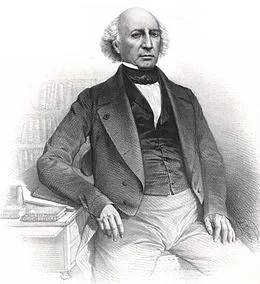Mathieu Orfila: The Pioneer of Modern Toxicology and His Impact on Forensic Science
Forensic science
- Mathieu Orfila: The Pioneer of Modern Toxicology and His Impact on Forensic Science
- Pioneer of Forensic Toxicology
- Early Life and Scientific Formation
- Education and Early Career in Spain
- Move to Paris and Academic Achievements
- Influence of Contemporary Scientists
- Revolutionary Contributions to Toxicology
- Development of Systematic Poison Detection
- Innovation in Chemical Analysis Methods
- Establishment of Scientific Principles
- Laboratory Methods and Experimentation
- Impact on Forensic Medicine
- Integration of Chemistry in Legal Cases
- Expert Testimony Methodology
- Influence on Criminal Investigations
- Legacy in Modern Science
- Current Applications of Orfila's Methods
- Influence on Toxicology Education
- Contemporary Recognition and Awards
- Conclusion
- FAQs
- What were Mathieu Orfila's main contributions to forensic science?
- Why is Mathieu Orfila known as the "Father of Toxicology"?
- How does Orfila's work continue to influence modern forensic practices?
- References
Orfila’s life and work not only defined a discipline but set a standard for every forensic scientist and forensic pathologist who followed. Meet more such Forensic Science Legends.
Mathieu Joseph Bonaventure Orfila
Pioneer of Forensic Toxicology
At a Glance
- Full Name: Mathieu Joseph Bonaventure Orfila
- Born: April 24, 1787 — Mahón, Spain
- Died: March 12, 1853 — Paris, France
- Best Known For: Inventing modern forensic toxicology, authoring the first comprehensive poison textbook, and making scientific poison detection central to criminal justice.
Early Life and Scientific Formation
The path of Mathieu Joseph Bonaventure Orfila to becoming the father of forensic toxicology started on the Spanish island of Minorca. A merchant family's son born on April 24, 1787, in Mahon [1], his early life shaped his future contributions to science.
Education and Early Career in Spain
Young Orfila followed his father's maritime dreams and began a voyage at age fifteen to Sardinia, Sicily, and Egypt [2]. This experience pushed him toward a different calling - medicine. He started his academic path at the University of Valencia in 1804 [3], where he showed exceptional skills in physics, chemistry, and mathematics.
Orfila's remarkable language abilities set him apart. He knew Spanish, English, French, German, Latin, and Greek, which gave him access to almost all scientific literature of his time [1]. His stellar work at the University of Barcelona caught local authorities' attention, and they awarded him a prestigious scholarship to study in Madrid and Paris [2].
Move to Paris and Academic Achievements
Paris saw Orfila grow from a promising student into an emerging scientific authority. He arrived in July 1807 [1] and faced possible expulsion due to the Peninsular War, but his mentor Louis Nicolas Vauquelin helped him stay [2]. His commitment to teaching showed as he gave daily private lessons in physics, chemistry, anatomy, and forensic medicine on all days but Sundays [1].
Influence of Contemporary Scientists
Orfila's scientific growth came through his work with leading minds of his time. These prominent figures shaped his path:
- Louis Jacques Thenard's chemistry lectures built Orfila's early knowledge [1]
- Nicolas Vauquelin and Antoine-François Fourcroy welcomed him to their laboratories [3]
Orfila earned his medical degree in 1811 [3] and his career took off. He became Louis XVIII's royal physician in 1816 [4] and secured the position of professor of medical jurisprudence by 1819 [2]. These achievements became the foundation of his groundbreaking work in forensic science.
To learn more about early contributors to forensic science, explore our article on the History of Forensic Science.
Revolutionary Contributions to Toxicology
Mathieu Orfila revolutionized toxicology in the early 19th century. His systematic approach to poison detection changed how suspicious deaths are investigated forever.
Development of Systematic Poison Detection
Orfila's most important contribution came from his landmark publication, "Traité des Poisons" in 1814 [1]. This detailed work introduced a revolutionary classification system for poisons that divided them into six principal categories [5]:
- Corrosive
- Astringent
- Acrid
- Narcotic
- Narcotico-acrid
- Stupifying
Innovation in Chemical Analysis Methods
Orfila's approach to chemical analysis stands out as truly remarkable. He created specific tests for various poisons, including arsenic, mercury, and lead in biological samples [6]. His trailblazing research combined mineralogy with toxicology and studied how different alkalis absorbed various mineral and vegetal acids [1].
His refinement of the Marsh test proved especially valuable when detecting arsenic in long-buried corpses [1]. This innovation became a vital tool in several high-profile cases, including the famous Lafarge trial [7].
For a detailed look at forensic toxicology advancements, check out our article on Forensic Toxicology.
Establishment of Scientific Principles
Orfila's meticulous approach laid the foundations of modern toxicology's scientific principles. He introduced revolutionary methods such as:
- Systematic Documentation: He compiled detailed records of clinical symptoms and potential antidotes through autopsies and innovative chemical tests [1]
- Animal Testing Protocols: He pioneered animal experiments to understand toxic mechanisms and their effects on the human body [6]
- Laboratory Analysis: He used advanced laboratory resources to develop novel experiments and approaches [1]
Orfila transformed toxicology from a speculative field into a rigorous scientific discipline. His work created a vital link between chemistry and legal investigations [5], setting standards that modern forensic practice still follows today.
Laboratory Methods and Experimentation
Orfila's laboratory work represents some of the most innovative experimental methods of the 19th century. His methodical approach to toxicology testing created new standards for scientific investigation.
Animal Testing Protocols
Orfila's groundbreaking contributions stem from his innovative work with animal models. Animal testing existed in medical research before him, but he substantially expanded its application by developing systematic protocols to study poison effects and antidotes [8]. His work with canine models showed the vital process of poison absorption and elimination from internal organs [9].
Chemical Detection Techniques
Orfila's chemical detection methods yielded remarkable results with various substances. He methodically studied the absorption of:
- Mineral acids (oxalic, nitric, acetic, hydrochloric, sulfuric)
- Metal salts (bismuth, gold, silver, lead, tin, zinc, mercury)
- Various alkalis including soda, barite, potash, and lime [9]
His most significant improvement came with the Marsh test for arsenic detection, which he refined to unprecedented accuracyIn scientific and measurement contexts, "accuracy" refers to the degree of proximity or closeness between a measured value and the true or actual value of the measured quantity. Accuracy indicates how well a measurement reflects Read Full Definition [7]. This enhancement proved vital in several high-profile cases. The famous Lafarge trial showcased his expertise as he detected arsenic in a long-buried corpse [10].
Documentation and Validation Methods
Orfila developed a meticulous approach to documentation and validationValidation, often referred to as method validation, is a crucial process in the laboratory when introducing a new machine, technology, or analytical technique. It involves a series of systematic steps and assessments to ensure that Read Full Definition. His process included:
- Detailed recording of clinical symptoms
- Systematic documentation of autopsyAn autopsy, also known as a post-mortem examination or necropsy (when performed on animals), is a thorough and systematic medical procedure that involves the examination of a deceased person's body, typically to determine or confirm Read Full Definition findings
- Complete chemical test results
- Cross-referencing with other scholars' work [1]
His attention to contaminationContamination - The unwanted transfer of material from another source to a piece of physical evidence. The inadvertent touching of a weapon, thereby adding fingerprints to it is an example of evidence contamination. Read Full Definition prevention stands out remarkably. He stressed the need to ensure arsenic detection results remained uncompromised by reagents, vessels, or instruments used in analysis [3]. His validation methods covered thorough testing of:
- Blood samples
- Urine analysis
- Tissue examination from various internal organs [9]
These rigorous laboratory methods helped Orfila lay the foundation of modern forensic toxicology. He created protocols that influenced scientific investigation for generations to come.
Impact on Forensic Medicine
Orfila's work had a revolutionary effect on legal proceedings and criminal investigations. His contributions forever changed the relationship between science and law.
Integration of Chemistry in Legal Cases
Poisonings were alarmingly common at the time. Orfila revolutionized courtroom proceedings by introducing rigorous chemical analysis [5]. His work became vital since arsenic, cyanide, and strychnine were available in homes. These substances made poisoning a common murder method [5].
Expert Testimony Methodology
Orfila's greatest contribution lies in his approach to expert testimony. His methodology included:
- Systematic chemical analyzes of corpses
- Detailed documentation of findings
- Clear explanation of scientific principles to lay audiences
- Cross-examination of other experts' methods [5]
The landmark Lafarge case of 1840 showcases his expertise. Local doctors couldn't detect arsenic in Charles Lafarge's body with outdated methods [11]. The authorities called Orfila as the highest expert. He demonstrated his meticulous approach by:
- Conducting precise"Precise" refers to the degree of closeness or consistency between multiple measurements or values taken under the same conditions. It indicates how well these measurements agree with each other, regardless of whether they are accurate Read Full Definition Marsh tests on body samples
- Analyzing soil from the burial site
- Definitively proving arsenic presence in the victim's remains [11]
For notable forensic case studies, explore Forensic Case Files.
Influence on Criminal Investigations
Orfila's work revolutionized criminal investigations. His testimony often determined jury verdicts [5]. He set new standards for scientific evidence
His methods strike a chord in modern forensic practice. Toxicologists now work among medical examiners and coroners [12]. His trailblazing efforts gave us a systematic approach to forensic investigation. This approach combines scientific rigor with legal precision.
Legacy in Modern Science
From today's view, we can see how Mathieu Orfila's work continues to shape forensic science and toxicology. His careful methods and key findings define how forensic toxicology works today.
Current Applications of Orfila's Methods
Orfila's influence shows in modern toxicology through his organized approach to finding poisons. His strict scientific methods have grown into today's standard protocols for toxicological testing [13]. His principles guide modern toxicologists who work with coroners and medical examiners during autopsies of suspected poisoning victims [12].
Today's forensic practices still follow Orfila's basic principles, especially in:
- Evidence-based analytical procedures
- Systematic documentation of findings
- Integration of chemical analysis with medical examination
- Public health and safety regulations related to chemical exposure [13]
Influence on Toxicology Education
Orfila's teaching methods changed medical education completely. He introduced animal experiments as teaching tools [1] and set new standards for hands-on learning. His impact shows clearly in modern toxicology courses, where his focus on mixing theory with lab work remains the life-blood of education [13].
Contemporary Recognition and Awards
The field honors Orfila's legacy through various institutions and awards. The Musee d'Anatomie Delmas-Orfila-Rouvière, 177 years old [1], stands as proof of his contributions. His lasting effect lives on through a medical prize that bears his name, created for toxicological surveys [1].
Scientists recognize Orfila's lasting influence through his work combining toxicology with medical and legal systems [13]. His work changed how courts handle cases by creating standards for evidence-based practice that we follow today. His legacy shows in how modern toxicologists handle:
- Chemical analysis in forensic cases
- Documentation of scientific evidence
- Expert testimony methodology [13]
Modern forensic practice keeps Orfila's vision of toxicology as an exact, scientific discipline alive. His demand for solid scientific evidence in legal cases is now the foundation of modern forensic toxicology [13].
Conclusion
Mathieu Orfila's remarkable experience from a merchant's son in Minorca to becoming the father of forensic toxicology shows his scientific dedication and state-of-the-art methods. His systematic approach revolutionized poison detection and turned unreliable guesswork into precise science.
His lasting achievements shaped the field significantly:
- Creation of the first systematic classification of poisons
- Development of reliable chemical detection methods
- Establishment of rigorous laboratory protocols
- Integration of scientific evidence into legal proceedings
Modern forensic practices and toxicology education still reflect his influence. Forensic laboratories worldwide follow his core principles of systematic analysis, meticulous documentation, and evidence-based conclusions. Medical schools teach his fundamental approach that combines theoretical knowledge with hands-on laboratory work.
Orfila's greatest legacy bridges science and justice. His work advanced scientific understanding and brought accountability to criminal investigations. Poisoners found it harder to escape detection. This blend of scientific rigor and ground application guides forensic toxicologists who serve both science and justice today.
For more about pioneers in forensic science, visit our section on Forensic Science Legends.
FAQs
What were Mathieu Orfila's main contributions to forensic science?
Mathieu Orfila, often referred to as the "Father of Toxicology," made several groundbreaking contributions to forensic science. He developed the first systematic classification of poisons, created reliable chemical detection methods, established rigorous laboratory protocols, and integrated scientific evidence into legal proceedings. Orfila worked tirelessly to make chemical analysis a routine part of forensic medicine and conducted important studies on asphyxiation, body decomposition, and exhumation.
Why is Mathieu Orfila known as the "Father of Toxicology"?
Mathieu Orfila earned the title "Father of Toxicology" for publishing the first scientific treatise on poison detection and their effects on animals. This work established forensic toxicology as a legitimate scientific field. Orfila's systematic approach to poison classification, innovative chemical analysis methods, and integration of toxicology into legal proceedings revolutionized the field and set the foundation for modern forensic toxicology.
How does Orfila's work continue to influence modern forensic practices?
Orfila's legacy continues to shape modern forensic practices in several ways:
- His teaching methods, which combined theoretical knowledge with practical laboratory work, continue to influence toxicology education worldwide.
- His systematic approach to poison detection and analysis has evolved into today's standardized protocols for toxicological testing.
- The integration of chemical analysis with medical examination remains a cornerstone of forensic investigations.
- His emphasis on rigorous scientific evidence in legal cases has become fundamental in contemporary forensic toxicology.
- Modern toxicologists still work closely with coroners and medical examiners during autopsies, following principles established by Orfila.
References
[1] - https://pmc.ncbi.nlm.nih.gov/articles/PMC9375880/
[2] - https://www.chemeurope.com/en/encyclopedia/Mathieu_Orfila.html
[3] - https://www.redalyc.org/journal/1812/181271968009/html/
[4] - https://www.nlm.nih.gov/exhibition/visibleproofs/galleries/biographies/orfila.html
[5] - https://www.rcseng.ac.uk/library-and-publications/library/blog/poisons-and-toxicology/
[6] - https://esfr.ca/zerosixai/mathieu-orfila-contribution-to-forensic-science
[7] - https://www.researchgate.net/publication/363109086_Mathieu_Joseph_Bonaventure_Orfila_1787-1853_The_Founder_of_Modern_Toxicology
[8] - https://www.researchgate.net/publication/224834165_Animal_Experiments_Vital_Forces_and_Courtrooms_Mateu_Orfila_Francois_Magendie_and_the_Study_of_Poisons_in_Nineteenth-century_France
[9] - https://www.maedica.ro/articles/2022/2/2022_17(20)_No2_pg532-537.pdf
[10] - https://en.wikipedia.org/wiki/Mathieu_Orfila
[11] - https://www.nlm.nih.gov/exhibition/visibleproofs/galleries/cases/orfila.html
[12] - https://www.crimemuseum.org/crime-library/forensic-investigation/toxicology-of-poisons/
[13] - https://toxicology.blog/about/index/mathieu-orfila











